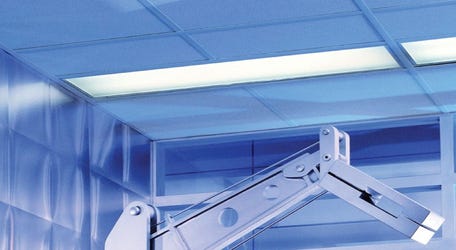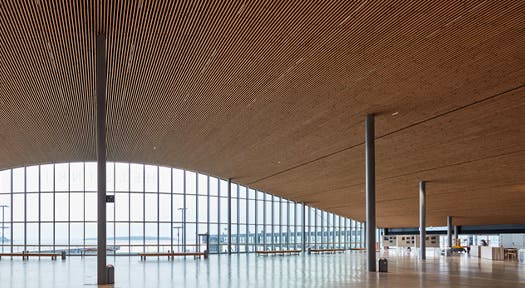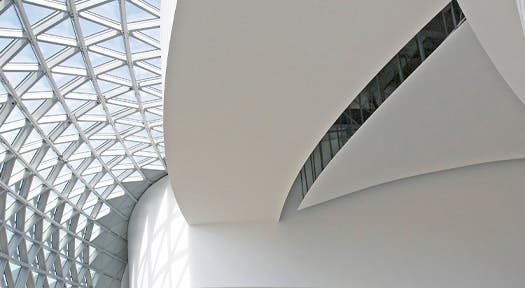Calculation of Reverberation Time
The sound quality and characteristics in a room may not suit the new purpose of the room. This quality usually presents itself as an echo or reverberation, which can make communication or other intended purposes of the room undesirable.
While there are some ways to correct these discrepancies, you should understand the calculation of reverberation time and how to apply it.
There are different ways to ascertain the reverberation time in a room, and they include using a reverberation time calculator, or the reverberation time formula.
This article will help you understand the important parameters in measuring the reverberation time in a room. It'll also teach you how to calculate the reverberation time in your room, to suit your purpose for the room.
What are Reverberation and Reverberation Time?
When you make a sound in a room, the sound waves travel through the air, or other media, till it reaches an obstruction. The obstruction either absorbs or reflects the waves, depending on its nature. Generally, all surfaces can absorb and reflect some amount of sound waves.
When the surface has absorbed some of the sound waves and reflected the rest, the waves travel in the opposite direction till it meets another obstruction that repeats the absorption and reflection process, till you can hear a perceptible sound. The act of sound waves bouncing off room surfaces till you hear a discernible sound is called reverberation.
Reverberation time is the amount of time it takes from the inception of that sound till you can hear it. Reverberation occurs in every room, but reverberation time is different in every room, hence the need to know how to apply the calculation of reverberation time.

Parameters that Influence Reverberation Time
The reverberation time in a room can vary from time to time, depending on some factors. The same factors are responsible for the varying reverberation time in different rooms, and they include:
The volume of the Room
The volume of the room, also the total area of the room, refers to the size of the room. It takes into account the length, breadth, and height of the room.
Generally, the bigger a room is, the higher the reverberation time since the sound waves have to travel a longer distance to reach obstacles.
The volume of a room is also important in the calculation of reverberation time in a room using the reverberation time formula.
Nature of the Room's Surface
What material are the various surfaces of the room made of? Different materials have different absorption coefficients, which influences the reverberation time in rooms.
Wall surfaces can be covered with gypsum boards while the floor is covered with a rug. In other cases, walls can be covered with ceramic tiles, and the ceiling can be covered with asbestos, all with different sound absorption properties and coefficients.
Area of the Room's Surface
The size of each room surface determines how much sound wave it absorbs and reflects. The bigger the room surfaces, the more sound waves they either absorb or reflect per time.
The area of the room surface reflects the volume of the room and influences the reverberation time of sound in a room. They’re important in the calculation of reverberation time in a room.
How to Calculate Reverberation Time
You can easily get the reverberation time of sound in your room by using any of the following methods.
Reverberation Time Calculator
There are websites and mobile applications that can help you determine the approximate reverberation time of sound in your room. These mobile apps are suitable for both iOS and Android devices. They work using the same principle - make a sound and it analyzes and records how long it takes for it to perceive the sound.
ClapIR is suitable for iOS smartphones while Android users can use Reverberation Time Pro. For both applications, you'll get better results by popping a balloon instead of clapping.
Reverberation Time Formula
The reverberation time formula is a mathematical equation that helps you determine the acoustic properties of your room. It uses factors such as room volume, absorption surfaces of the room, and a constant to get the reverberation time of sound produced in that room. The mathematical formula is expressed as:
T60= 0.16V/A
Where;
T60 is the reverberation time.
V is the total volume of the room (in meters).
A is the total absorption of the room.
Using this method of knowing the reverberation time of sound produced in a room doesn't require sophisticated equipment, or that you produce any sound. However, you'll need to do some measurements, and note some material properties, to identify them.
Let's use a hypothetical room as an example. It is 5m long, 7m wide, and 3m high. Its walls are covered with gypsum boards, the ceiling is also covered with gypsum wallboards, and the floor is covered with non-pad thick carpet.
We'll need to calculate the volume of the room and the total absorption area.
Total volume of the room; 5x7x3 (m) = 105m3.
Total absorption of the room is the addition of all the individual absorption surfaces in the room. To get that, we need to know the absorption coefficient of the materials for constructing the room, and multiply them with the area of the individual surfaces as thus:
Ceiling ( with gypsum wallboards); 5m x 7m = 35m x 0.05 = 1.75
Floor (with non-pad thick carpet); 5m x 7m = 35m x 0.30 = 10.5
Walls (covered with gypsum wallboards)
Wall 1; 5m x 3m = 15m x 0.05 = 0.75
Wall 2; 5m x 3m = 15m x 0.05 = 0.75
Wall 3; 7m x 3m = 21m x 0.05 = 1.05
Wall 4; 7m x 3m = 21m x 0.05 = 1.05
Total Absorption of the room; 1.75 + 10.5 + 0.75 + 0.75 + 1.05 + 1.05 = 15.85
Recall that Reverberation Time, T60 = 0.16V/A.
Now, V = 105m3, and A = 15.85.
Therefore, T60 = 0.16(105)/15.85
T60 = 1.06 seconds.
This means the hypothetical room will need some acoustic treatment as it takes sound more than a second to propagate. That is, more than a second passes before one can hear the sound produced in that room.
You can find the absorption coefficient of some materials from online resources.

Data measured in 1:3 octave bands from 250Hz to 5kHz | Source
Final Thoughts
The reverberation time of sound in your rooms and halls influences the audio quality it produces. However, understanding the calculation of reverberation time, and its parameters, can help you make the necessary adjustments to the room surface by installing some sound reflecting and absorbing materials. You can get a quote from us.











